In a previous blog post we discussed the importance of sun protection, the need for vitamin D from the sun, and some of your options regarding protecting your skin from excessive sun exposure. Now we want to delve into how the sun damages the skin and how you can harness the power of nutrients to protect and rebuild the skin cells.
How does the sun damage the skin?
The sun emits three types of light; visible light, infrared light, and ultraviolet light. Ultraviolet (UV) light is the type of light that can damage the skin. There are three types of UV light:
UVC light - This light doesn't doesn't actually reach the earth, it is blocked by the ozone layer.
UVB light - Reaches our skin and penetrates through the first layer causing the skin to burn.
UVA light - Light that can reach deep down in the dermis layer of the skin causing damage to the new skin cells and structure of DNA.

UVB light is able to burn the skin, as the cells absorb energy from the UVB light which damages the cell walls and cellular DNA. In response to the damage, the body sends extra blood to the cells to help repair them— resulting in a red hue. This type of skin damage increases the risk of skin cancer as over time the skin loses its ability to repair itself. In addition, the damaged DNA can cause skin cancer lesions to form and without the ability to repair the cells, these skin cancer cells are left to multiply.
UVA light reaches deeper into the skin layers where it’s able to damage not only cells but connective tissue too. Once the connective tissue has been damaged it loses its elasticity causing wrinkles and ageing. The skin cells in the deeper layers of the skin, such as the dermis, eventually work their way up to the outer layer of the skin. However, if the cells have been exposed to too much UVA light they will already be damaged by the time they reach the outer layer. This massively contributes to the likelihood of the skin developing cancer, as well as changing the look of the skin— making it appear uneven, discoloured and older than it really is.
The mechanisms by which the light energy (UVA and UVB) damages the cells is not exactly understood, but it is known that some of the damage is caused by oxidative damage. The light energy creates free radicals which are single election molecules which cause damage to the cells — known as oxidative damage or free radical damage.
How can nutrients protect the skin?
It’s possible to use antioxidants to protect against oxidants or free radicals. Antioxidants work by pairing up with free radicals and neutralising them so that they don't cause further damage. Antioxidants can be absorbed and utilised by applying them directly to the skin or consuming them as part of your diet. We suggest using both topical and dietary antioxidants to protect your skin.
Antioxidants are found most abundantly in plants and is where the majority of our diet based nutrients come from. It is also where Tailor harvest their antioxidants that are used in their skincare.

Here are a few key antioxidants to help protect and rejuvenate your skin from the outside and within:
Vitamin C
Vitamin E


